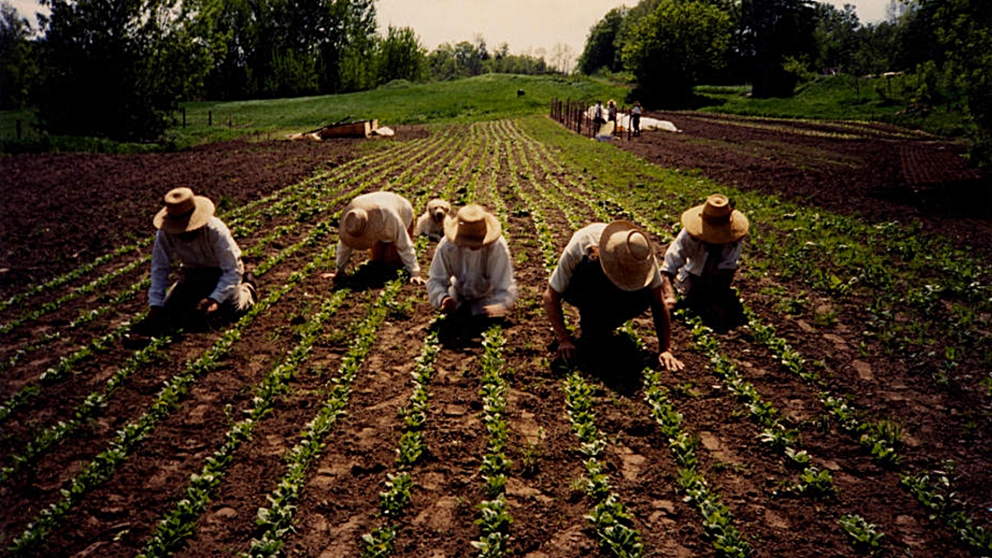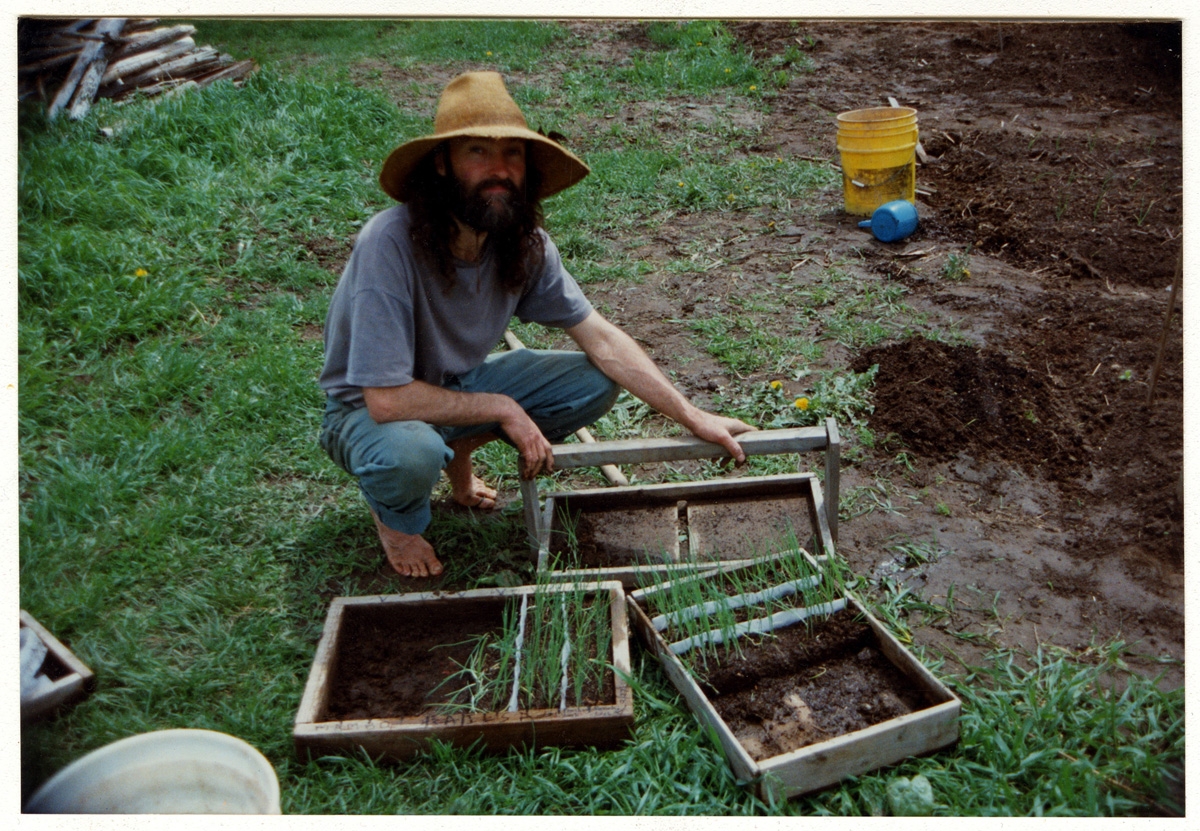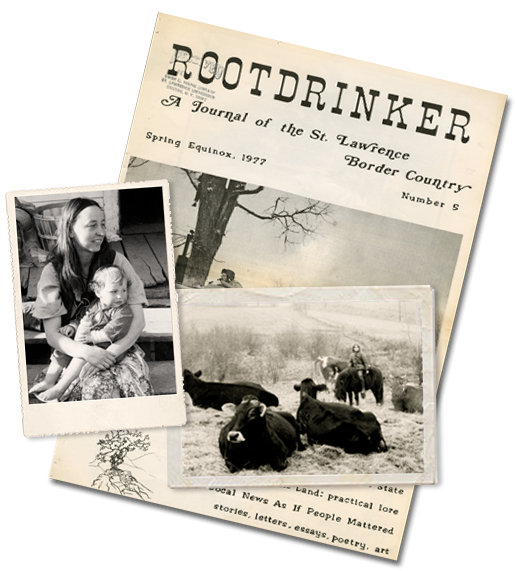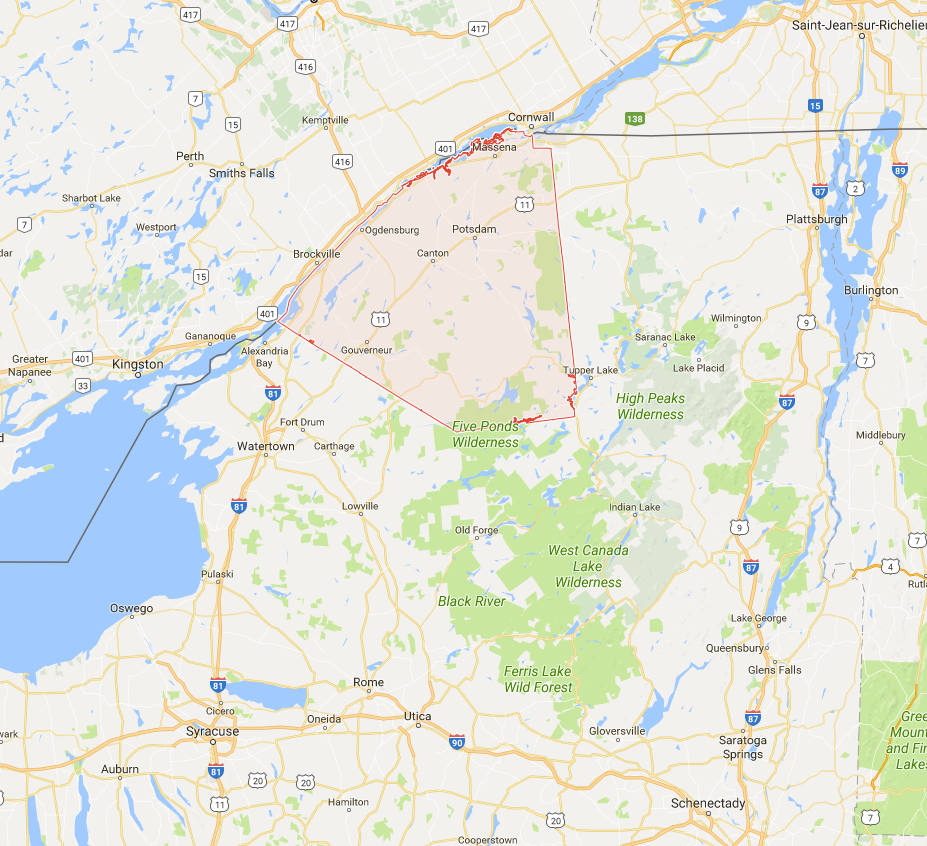Back to the Land
Background
Beginning in the 1960s, St. Lawrence County, New York, was one of dozens of rural destinations in the United States to attract the attention of back-to-the-landers, a broad movement of mostly young people seeking anti-materialistic lifestyles in rural settings.
Those first back-to-the-landers have served as example and inspiration to subsequent generations of aspirants to alternative lifestyles in the country. In St. Lawrence County, back-to-the-landers established communes and individual homesteads, experimented with alternatives to the cash economy, and tried to sustain themselves through farming and other land-based ventures.
Over the years, they also became engaged citizens of the county, greatly influencing the public life of the region.
Despite the great significance of back-to-the-landers to the history and culture of St. Lawrence County, no systematic effort has ever been made to assemble a research collection on the subject.
The partners in this project aim to amass as complete a record of this population as possible. Three key components of the project will be to search the published record for citations, conduct fieldwork in St. Lawrence County, and invite those associated with the back-to-the-land community to submit copies of their own photographs, journals, and newsletters for inclusion in the collection.
About the Project
Despite the great significance of back-to-the-landers to the history and culture of the region, no systematic effort has ever been made to assemble a research collection on the subject.
The partners in this project, which include the State University of New York at Potsdam and the non-profit organization Traditional Arts in Upstate New York, aim to amass as complete a record of this population as possible.
Project Details
http://digitalcollections.stlawu.edu/collections/back-to-the-land
Collection Description:
Summary: Partners from four local institutions have joined efforts to develop a digital collection and research portal highlighting the significance of the back-to-the-land movement in St. Lawrence County.
Partners:
- Jill Breit, Folklorist and Executive Director, Traditional Arts in Upstate New York
- M.J. Heisey, Historian, State University of New York at Potsdam
- Doug Welch, Librarian (retired), State University of New York at Canton
- Eric Williams-Bergen, Director of Digital Initiatives, St. Lawrence University
Teaching with the Collection
Digital Collections materials, such as those found in the Back to the Land Research Collection, inspire students by adding another dimension to their understanding of ideas and texts. Journals, documents, maps and photographs - in digital formats - offer ready access for students to research and explore.
Our digital collections are most often representations of print materials that we have in Special Collections and the Vance University Archives and the Richard F. Brush Art Gallery. Faculty and students are encouraged to view our digital collections as an introduction to our print collections.
Project Location
When counties were established in New York State in 1683, the present St. Lawrence County was part of Albany County. This was an enormous territory, including the northern part of New York State as well as all of the present State of Vermont and, in theory, extending westward to the Pacific Ocean.
The county was reduced in size on July 3, 1766 by the creation of Cumberland County, and further on March 16, 1770 by the creation of Gloucester County, both containing territory now in Vermont.
Special Collections @ St. Lawrence University
Special Collections is the place in the general library where we keep any items that are scarce, fragile, or valuable. Additionally, we have a number of subject collections. Any type of library material that meets the above criteria can be found in special collections, such as printed books, journals, newspapers, maps, atlases, photographs, reports, diaries, correspondence, etc.
Special Collections materials inspire students by adding another dimension to their understanding of ideas and texts. Books, documents, maps and photographs-- in their original or early formats-- offer additional “texts” (sometimes called paratext) for students to consider. Plus they are just plain fun. In recent years we have worked with classes in Economics, English, History, Fine Arts, Global Studies, Sociology, and the First Year Program. We have items and collections that are of interest to disciplines across the curriculum, and we can: Prepare specialized resource lists of materials available for particular courses & subjects. Host class visits in the Special Collections Reading room to introduce your classes to our resources and effective ways to use them. Assist you in designing assignments that use our materials. Assist students in ongoing research projects using our materials. Assist you in your own research by acquiring or locating specific materials.
Get Back / Stay Back · 2nd Generation Back-to-the-Landers
References
A Preliminary Checklist of Materials Relating to the Back to the Land Movement in St. Lawrence County, NY, c. 1960-Present
Books
Burdick, Neal and Singer, Natalia Rachel. Living North Country. Utica, NY: North
Country Books, 2001.
Crowell, Marnie Reed Crowell. Greener Pastures. Funk and Wagnells, 1973.
Miller, Timothy. The 60's Communes: Hippies and Beyond. Syracuse, N.Y.: Syracuse
University Press, 1999.
Van de Water, John. Ward. This Land, These People: Essays about North Country Life.
Canton, NY, Jonsylvania Publishing, 1990.
Articles: Periodicals, Online, and Newspaper
Bassity, Christopher. "Getting from Here to There: On Water and in Memory."
www.ionet.net/~cbb/Memory.html. 1992, 2 p.
Bassity, Christopher. "Whose Place is this?" www.ionet.net/~cbb/Whose.htm.
1993, 4 p.
Bassity, Christopher. "Lost, Perplexed and Other Orientations."
www.ionet.net/~cbb/Lost.htm. 1996. 2 p.
Bassity, Christopher. "Pete Frick, Who Lived in Farley."
www.ionet.net/~cbb/Frick.htm. 1997, 1p.
Bassity, Christopher. "The Twenty-Nine Pound Rat Trap." www.ionet.net/~cbb/Rat.htm. 2000, 1 p.
Cook, Kenneth. "I Can Still Remember." Mother Earth News, 52, July/August 1978,
Gargan, Edward A. "Rural Homesteaders Seek Self-Sufficiency and Cherish Solitude."
New York Times, January 28, 1985. Section B, p 1, column 5.
"Macomb 'Hippie dome' Razed to Make Way for Wesleyans." Watertown Daily Times,
back page, August 19, 2005.
Trebilcock, Bob. Country Optimism (Homesteading in St. Lawrence County, New
York State), Blair and Ketchum's Country Journal. 1986, v. 13, p. 26, 27.
Periodicals:
Rootdrinker. 1975-1985. vol. 1-15.
Round Robin Newsletter. ???????
Women Together: The Journal of North Country Women
Rural Life Association Newsletter. Irregular 1980-1986?
Project Details
http://digitalcollections.stlawu.edu/collections/back-to-the-land
Collection Description:
Summary: Partners from four local institutions have joined efforts to develop a digital collection and research portal highlighting the significance of the back-to-the-land movement in St. Lawrence County.
Partners:
- Jill Breit, Folklorist and Executive Director, Traditional Arts in Upstate New York
- M.J. Heisey, Historian, State University of New York at Potsdam
- Doug Welch, Librarian (retired), State University of New York at Canton
- Eric Williams-Bergen, Director of Digital Initiatives, St. Lawrence University



